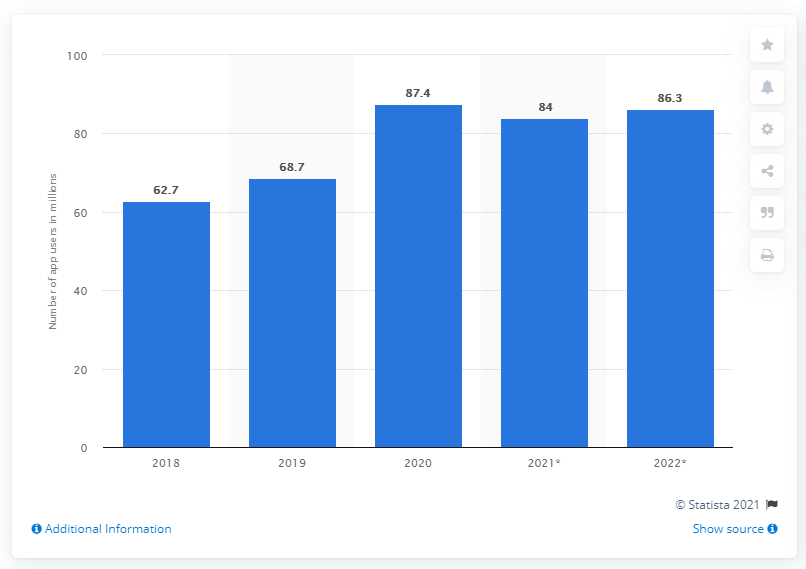The COVID-19 pandemic has changed the way we work, communicate and keep healthy – perhaps forever. In the age of the ‘new normal,’ we may discover that fitness apps really are here to stay.
As the health crisis continued, lockdowns began to interrupt the gym sessions and group fitness activities that many had become accustomed to before the pandemic. This led to a significant rise in the use of fitness apps like Strava – which has now grown to over 73 million users. In 2020, Strava claimed that an average of two million new users were registering with the app for the first time.
The Strava app itself utilised GPS technology to accurately record exercise, enabling users to compare their performance and effectively interact with one another in a similar way to a social media network, all without actually having to meet up.
Naturally, in a time of widespread restrictions imposed to stem the spread of the virus, Strava became particularly popular for individuals looking to keep fit whilst isolating. Other apps like Freeletics also saw seismic boosts in usage – with usage increasing by as much as 50% between March and June of 2020.
The Rise and Rise of Fitness Apps
With gyms and fitness studios having been closed in many nations worldwide, the familiar trips to work out has vanished for millions of individuals. However, despite this, many appear to have spent much of the pandemic working out more frequently than ever before.
Before COVID-19, working out generally involved carving out time to visit a gym – something that many people found challenging, especially when commuting to work on a regular basis. However, streaming services and apps have brought workouts into consumers homes – and at a much lower cost than typical gym memberships.
Back in 2019, just 7% of surveyed Mindbody users claimed to use fitness streaming services on a weekly basis. By April 2020, this figure had rocketed to more than 80%.
Necessity prompted new users to try fitness streaming services for the first time during the pandemic. In March 2020, many popular chains with locations across the world like Gold’s Gym, LA Fitness, Equinox and SoulCycle shut down for a series of months to comply with lockdown orders.
As a result, Q2 fitness and health app downloads in 2020 shot up by 47%, with many streaming services experiencing significant surges in demand.
Number of health and fitness app users in the United States from 2018 to 2022 (in millions)

The data above shows that there was a surge in health and fitness app usage in the US that was responsible for seeing nearly 20 million more app users enter the market in 2020.
Significantly, the chart also shows that there is no sign of the surge reverting back to its old levels following on from the pandemic, with an anticipated fall to 84m users in 2021 before recovering to the same levels seen during the peak of the pandemic in 2022.
This indicates that, even though gyms are likely to remain open throughout the latter stages of 2021 and 2022, the fitness app userbase will stay committed to their apps – even if it means using them in tandem with their gym exercise.
There are also clear signs that more fitness apps are entering the marketplace with the intention of appealing to more niche audiences and sports. Notably, OctaZone is an app that recently launched that’s committed to delivering personalized fitness programmes devised by UFC fighter Khabib Nurmagomedov. The app constantly monitors its user’s performance levels, while interpreting their weight, height and health goals into producing bespoke training plans that Khabib personally undertakes.
One resounding app-based success to come out of lockdown was the Couch to 5K app – which was designed to challenge users of varying levels of fitness to build up their performance and ultimately run five kilometres.
Continuing Post-Pandemic Momentum
One of the biggest stars in the world of fitness during the pandemic, Joe Wicks, believes that remote fitness will continue to build in popularity after COVID-19 is over. Wicks’ work on his The Body Coach TV YouTube channel during lockdown made the fitness instructor a household name in the UK – and he plans to continue ensuring that people of all ages stay fit in the age of the new normal: “I’d also love to be working more with schools, so maybe I’m doing outreach programs or getting some kind of initiative in place within in every school so that they have a little Body Coach ambassador promoting the work and facilitating the group sessions,” Wicks explained.
Wicks sees a future of more people taking up online workouts in a post-pandemic landscape: “You do think, is this going to change the fitness industry, like will people start to do more online businesses and start to increase that digital offering? They are still going to have their physical premises, but maybe as a side (project), they also need to constantly evaluate if they are doing enough in the digital space. Because it’s amazing, you can reach millions of people if you get it right.”
The pandemic has been an exceptionally challenging time for businesses and individuals alike around the world. But, thanks to the proficiency of technology, it’s also helped to show us that we can still communicate, work, and keep healthy in remote locations. With this in mind, a future of app-based fitness seems like an excellent opportunity for millions to keep healthy.


